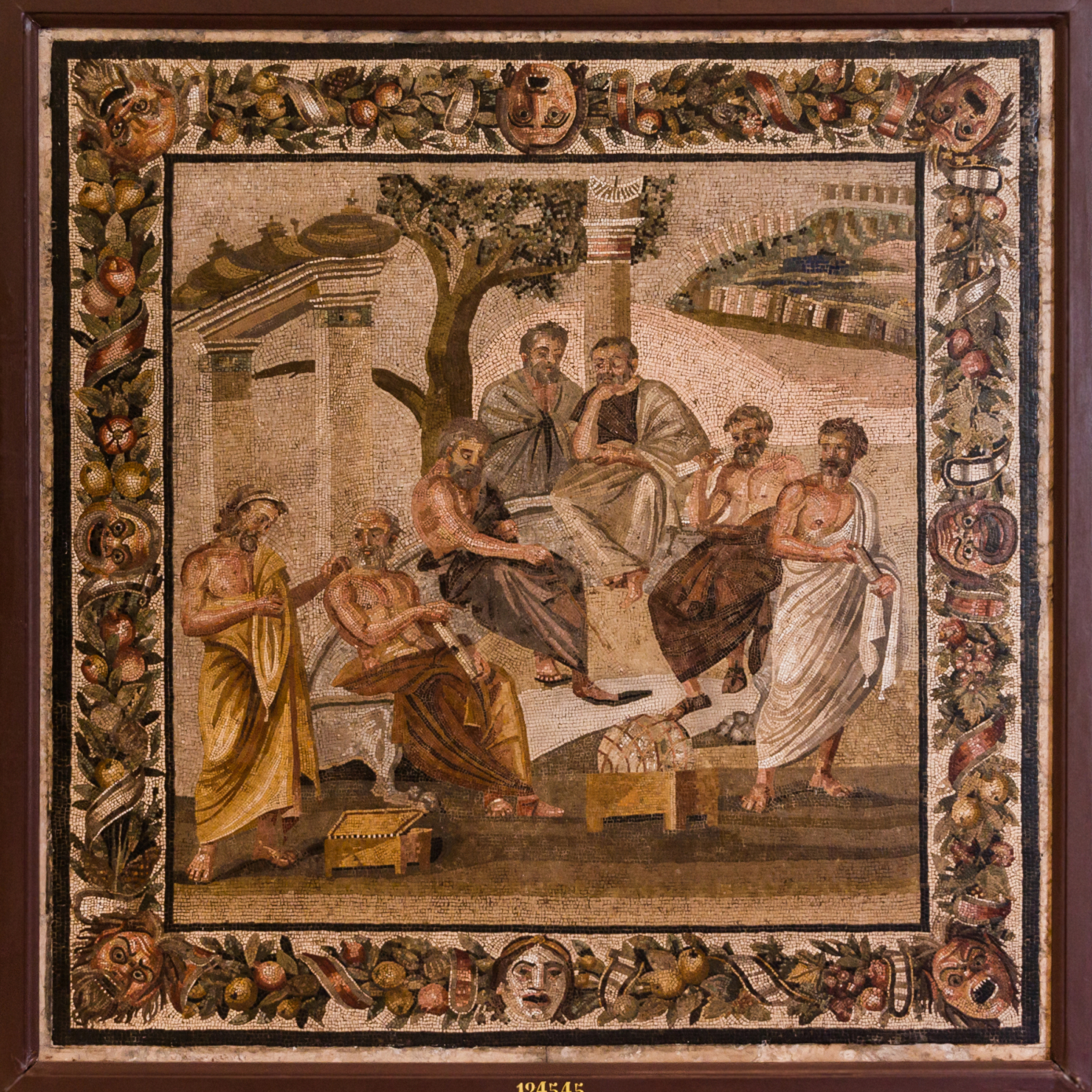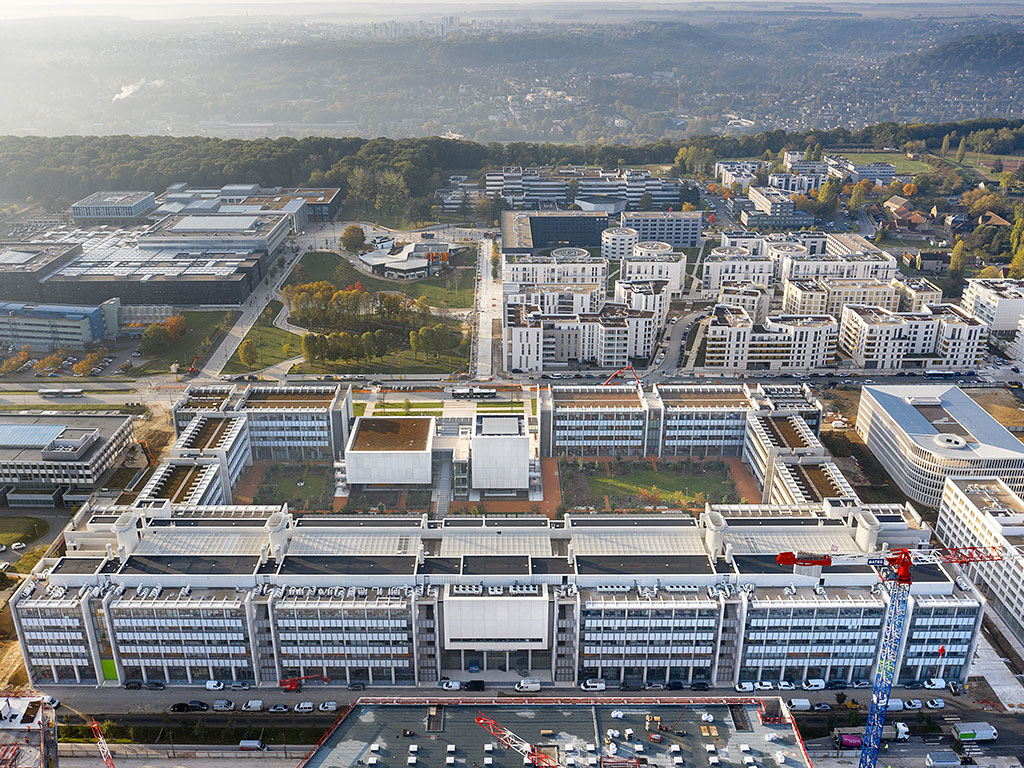Slideshow: Paris-Saclay University campus, Moulon plateau, Renzo Piano Building Workshop architect by Michel Denancé photographer
Campuses and Businesses: Competition and Innovation
Higher education institutions now face competitive challenges similar to those of businesses, needing to attract clients/students in a context of economic and scientific competition at a global scale, as highlighted by national and international academic rankings, just as businesses contend with one another in a bid to attract talent.
Campuses play a key role in enhancing the appeal of institutions, driving them towards iconic architecture akin to corporate headquarters, where the symbolic dimension of embodied values has become essential. The challenge is to design hybrid spaces that combine physical and digital elements, offering a richer experience for students. Campuses are now “instagrammable” places looking to make a statement, develop a brand image, embody values, and instill a sense of pride and community. It is noteworthy that PSL UniversityA university group made up of 11 institutions—Collège de France, Conservatoire National Supérieur d’Art Dramatique – PSL, École nationale des chartes – PSL, École nationale supérieure de Chimie de Paris – PSL, École nationale supérieure des Mines de Paris – PSL, École normale supérieure – PSL, École Pratique des Hautes Études – PSL, ESPCI Paris – PSL, Institut Curie, Observatoire de Paris – PSL, Paris-Dauphine – PSL. which was founded in 2010 to bring together all of the major institutions in the Latin Quarter and became a Grand établissement in 2022 (i.e., a special university institution with more autonomy than regular universities), still lacks a single emblematic location befitting its academic prestige, despite its original ambition to enhance the international visibility of its constituent institutions.
The boundaries between businesses and educational institutions, as well as those between professors, students, and professionals, are becoming increasingly porous. These discontinuous paths reflect the evolving profiles and expectations of the new generations. Students are no longer passive recipients of lecture-based knowledge, but active participants in their learning. The shift to “on-demand” content, which has become the norm in cultural consumption, is being transposed to education, allowing for personalized learning paths. Traditional teaching spaces designed for the vertical transmission of knowledge, with a knowledgeable professor imparting wisdom to learners in a hierarchical relationship, must adapt to this new reality. Rethinking the archetype and location of campuses offers opportunities to blend the verticality of classrooms and lecture halls with the horizontality of social and informal interactions.
Campuses must not only exhibit potential for flexibility, but also create new porosities with society through incubators, innovation centers, learning hubs, and other mixed-use spaces that are more open to the city and businesses. For instance, the Rolex Learning Center, located right in the center of the École Polytechnique Fédérale de Lausanne, is simultaneously a space dedicated to knowledge, a library, and a venue for cultural dialogue; it is open to both students and the general public, offering a range of services, including libraries, information centers, study areas, restaurants, cafes, and high-quality outdoor spaces. Finland’s Aalto University exemplifies this trend with its “innovation university,” which merges three institutions (a design school, an engineering school, and a business school) relocated to a single campus funded by both public and private sources; the campus promotes cross-disciplinary curricula, an entrepreneurial mindset, and learning through prototyping. Finally, we see the emergence of resolutely hybrid models such as IXcampus, which hosts the CY Design School around the park of Château Saint-Léger in Saint-Germain-en-Laye, alongside a thriving startup ecosystem.













